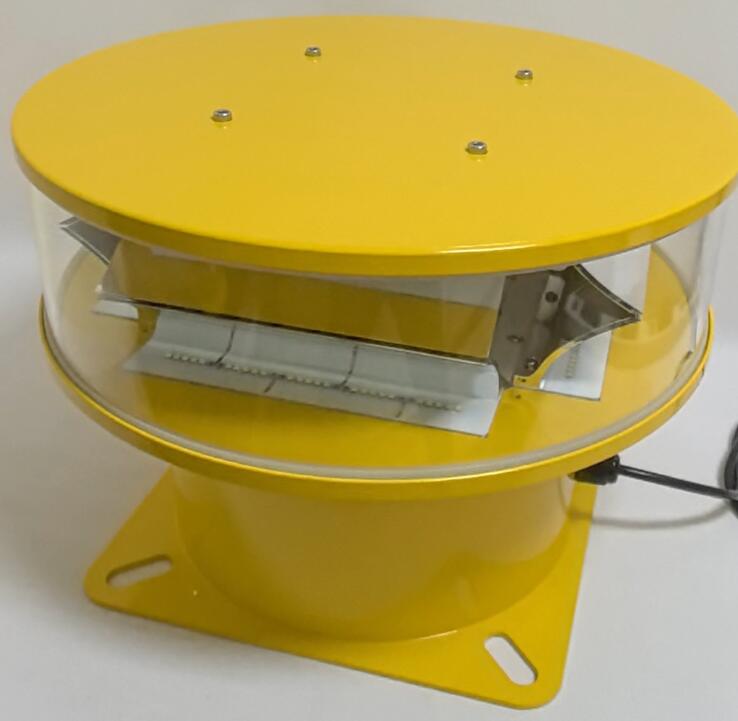Revolutionizing Aviation Safety with Lampu Obstruction Light: A Modern Approach
The lampu obstruction light is a critical component in ensuring aviation safety, particularly in marking tall structures that could pose risks to aircraft. This article explores the significance, features, and innovative applications of the lampu obstruction light, emphasizing its role in modern aviation and infrastructure safety.
Introduction
In the realm of aviation safety, visibility is paramount. Tall structures such as communication towers, wind turbines, and skyscrapers can become hazards if not properly marked. The lampu obstruction light serves as a beacon, ensuring these structures are visible to pilots, especially during nighttime or adverse weather conditions. This article delves into the importance of the lampu obstruction light, its unique features, and its diverse applications in modern safety systems.
The Importance of Lampu Obstruction Light in Aviation
The primary purpose of the lampu obstruction light is to enhance the visibility of tall structures, thereby preventing collisions with aircraft. These lights are strategically installed on structures that exceed specific height thresholds, as mandated by aviation authorities worldwide. The lampu obstruction light is particularly valued for its reliability, durability, and ability to function in extreme conditions, making it an indispensable tool in aviation safety.
Key Features of Lampu Obstruction Light
High Visibility: The lampu obstruction light is designed to emit a bright, consistent light that can be seen from long distances. This ensures that pilots can identify potential obstacles well in advance, allowing them to adjust their flight paths accordingly.

Weather Resistance: Built to withstand harsh environmental conditions, the lampu obstruction light is resistant to rain, wind, and extreme temperatures. This durability ensures uninterrupted operation, even in challenging climates.
Energy Efficiency: Modern lampu obstruction lights are engineered to consume minimal energy while delivering maximum performance. This not only reduces operational costs but also aligns with global sustainability goals.
Low Maintenance: The design of the lampu obstruction light prioritizes ease of installation and maintenance. This minimizes downtime and ensures that the lights remain operational with minimal intervention.
| lampu obstruction light |
Compliance with International Standards: The lampu obstruction light adheres to stringent aviation safety regulations, ensuring compatibility with global safety protocols.
Innovative Applications of Lampu Obstruction Light
Wind Energy Farms: Wind turbines, often located in remote or offshore areas, require effective obstruction lighting to ensure they are visible to low-flying aircraft. The lampu obstruction light is widely used in wind farms to mitigate collision risks.
Telecommunication Towers: Communication towers, which are often tall and located in isolated areas, rely on lampu obstruction lights to remain visible to pilots. This is especially crucial in regions with high air traffic.
| lampu obstruction lights |
Urban Skyscrapers: In densely populated urban areas, skyscrapers and high-rise buildings can pose significant risks to aircraft. The lampu obstruction light is used to mark these structures, enhancing their visibility and reducing the likelihood of accidents.
Bridges and Infrastructure: Large bridges, particularly those near airports or flight paths, are equipped with lampu obstruction lights to ensure they are visible to pilots. This is critical for maintaining safety in areas with heavy air traffic.
Offshore Oil Rigs: Offshore structures, such as oil rigs, are often located in areas with frequent helicopter traffic. The lampu obstruction light is used to mark these structures, ensuring they are visible to pilots operating in challenging maritime environments.
The Future of Lampu Obstruction Light Technology
As technology continues to advance, the lampu obstruction light is evolving to meet the demands of modern aviation and infrastructure. Innovations such as solar-powered lights, smart monitoring systems, and adaptive lighting solutions are being integrated into the design of lampu obstruction lights. These advancements not only enhance performance but also contribute to sustainability and operational efficiency.
Solar-Powered Solutions: Solar-powered lampu obstruction lights are gaining popularity, particularly in remote or off-grid locations. These lights harness solar energy, reducing reliance on traditional power sources and lowering operational costs.
Smart Monitoring Systems: Modern lampu obstruction lights are equipped with smart monitoring systems that allow for real-time tracking of performance and maintenance needs. This ensures that any issues are promptly addressed, minimizing downtime.
Adaptive Lighting: Some lampu obstruction lights now feature adaptive lighting technology, which adjusts the intensity of the light based on ambient conditions. This ensures optimal visibility while conserving energy.
The lampu obstruction light is a vital component in ensuring the safety of both aviation and infrastructure. Its high visibility, durability, and energy efficiency make it an indispensable tool for marking tall structures and preventing collisions. As technology continues to evolve, the lampu obstruction light is poised to become even more effective, contributing to a safer and more sustainable future.
In summary, the lampu obstruction light represents a perfect blend of innovation and practicality, addressing the challenges of modern aviation safety with precision and reliability. Its widespread applications across various industries underscore its importance in safeguarding lives and infrastructure. As we move forward, the lampu obstruction light will remain a cornerstone of aviation safety, adapting to new challenges and setting new standards in the field.
